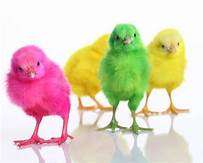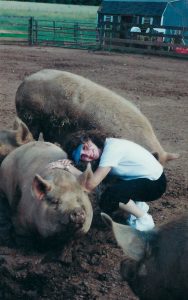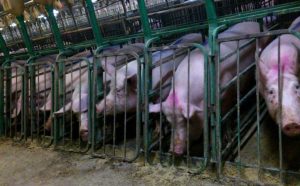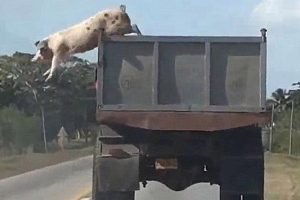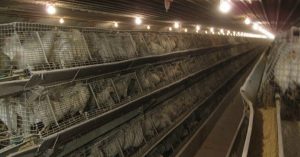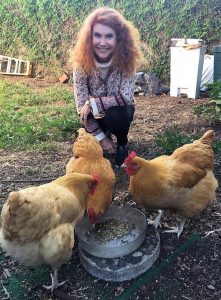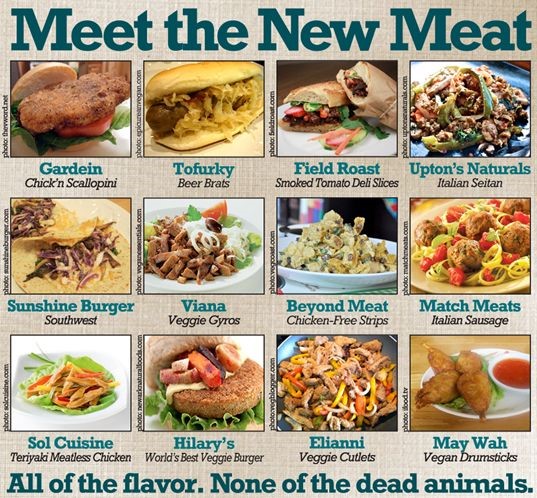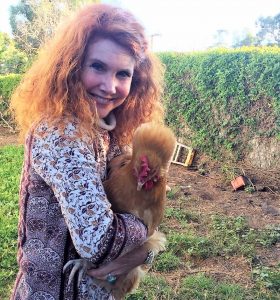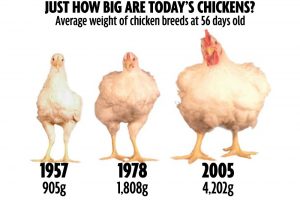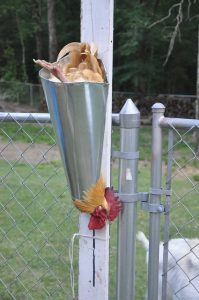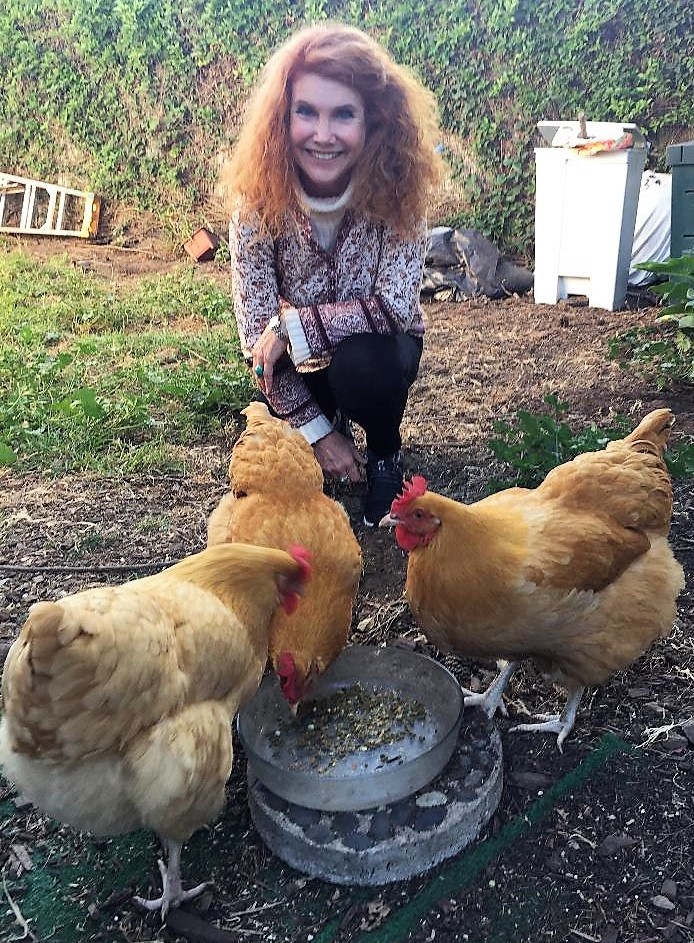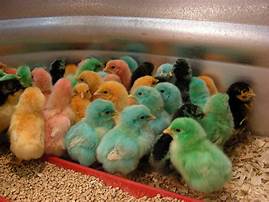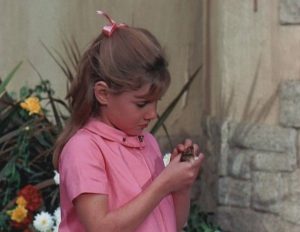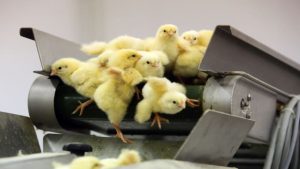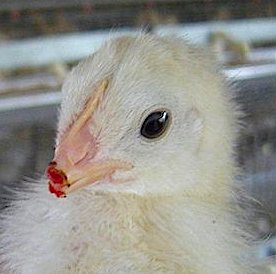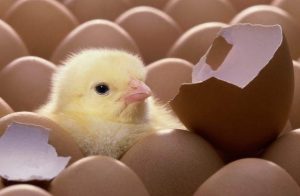 Every time you buy a carton of eggs – conventional, free-range, cage-free, organic, “certified humanely raised,” or whatever label is put on them – you are paying for the murder of hundreds of millions of baby chicks, 200 million each year in the United States alone. They are thrown in a dumpster and left to die, tossed in garbage bags and suffocated, or more commonly, ground up alive in industrial meat grinders. Why does this happen, you ask? Wouldn’t it be more profitable to let them grow up and kill them for meat?
Every time you buy a carton of eggs – conventional, free-range, cage-free, organic, “certified humanely raised,” or whatever label is put on them – you are paying for the murder of hundreds of millions of baby chicks, 200 million each year in the United States alone. They are thrown in a dumpster and left to die, tossed in garbage bags and suffocated, or more commonly, ground up alive in industrial meat grinders. Why does this happen, you ask? Wouldn’t it be more profitable to let them grow up and kill them for meat?
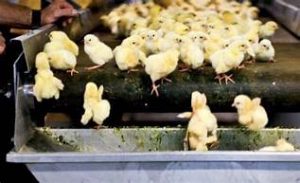 Actually, no. It takes a lot of food, shelter and water to raise a chick into a full-grown chicken. Male chickens simply will not grow as big or as fast as female chickens. They also don’t lay eggs. To egg farmers, male chickens are a liability that eat into profits, so they cut their losses early and “humanely euthanize” (i.e. grind up) baby chicks that are only a day old.
Actually, no. It takes a lot of food, shelter and water to raise a chick into a full-grown chicken. Male chickens simply will not grow as big or as fast as female chickens. They also don’t lay eggs. To egg farmers, male chickens are a liability that eat into profits, so they cut their losses early and “humanely euthanize” (i.e. grind up) baby chicks that are only a day old.
Though the males die a relatively quick death, the females will live their entire lives crammed six to a cage so small they can’t stand up or turn around. Chickens are treated as egg-laying machines with no regard for their basic biological and behavioral needs. They are “debeaked,” meaning their beaks are nearly cut off so they can’t peck at each other. Many are put through periods of starvation to force them to molt, which will boost their egg-laying productivity. These hens’ natural life span of 15-20 years is cut drastically short, living only one to two years before they are slaughtered when their productivity declines. Their bodies are so wasted and emaciated that their meat is only able to be used in soups and pet food.
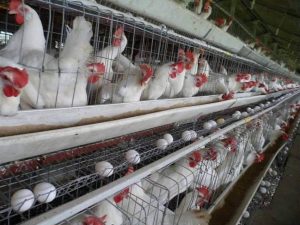 Do you see the phrase “cage-free eggs” and imagine they come from hens wandering free in a sunny barnyard? Think again. “Cage-free” chickens are kept not six to a small cage but packed in giant warehouses. They are still debeaked and still sent to the slaughterhouse when their egg-laying productivity declines.
Do you see the phrase “cage-free eggs” and imagine they come from hens wandering free in a sunny barnyard? Think again. “Cage-free” chickens are kept not six to a small cage but packed in giant warehouses. They are still debeaked and still sent to the slaughterhouse when their egg-laying productivity declines.
The label “free-range eggs” sounds much better, doesn’t it? It’s not. It’s simply another marketing ploy. In the words of the USDA, “free-range” birds are “raised in heated and air-cooled growing houses with access to the outdoors.” That “outdoor area” is typically a small covered porch or patio with a cement floor, accessed through a small, hard-to-find door. There is nothing “cruelty-free” about getting to spend a few minutes a day on a crowded cement patio where the sunlight never reaches. Once again, the chickens are debeaked, forced to live in their own waste, fed the same antibiotic and arsenic-laden feed that other chickens eat, and are still slaughtered in ways that will make your blood turn cold. Remember: free-range chickens are far from free, and they don’t live on a range.
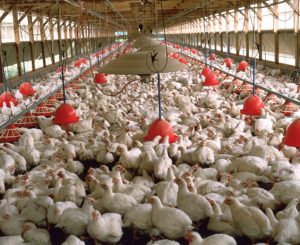 Organic eggs come from chickens that are fed a certified organic, vegetarian diet (though chickens’ natural diet is not strictly vegetarian). There is still no barnyard or pasture, no space to roam free, and often no sunlight, and the living conditions are still far from cruelty-free. USDA regulations permit egg farmers to confine their hens 24 hours a day if they feel that the weather is too harsh, that there may be a disease outbreak, or to protect soil and water from being contaminated by all of the waste inherent in the keeping of thousands of chickens. There are no clear regulations on any of these factors, and because they are left completely to the farmer’s discretion, are almost never regulated or enforced in any way.
Organic eggs come from chickens that are fed a certified organic, vegetarian diet (though chickens’ natural diet is not strictly vegetarian). There is still no barnyard or pasture, no space to roam free, and often no sunlight, and the living conditions are still far from cruelty-free. USDA regulations permit egg farmers to confine their hens 24 hours a day if they feel that the weather is too harsh, that there may be a disease outbreak, or to protect soil and water from being contaminated by all of the waste inherent in the keeping of thousands of chickens. There are no clear regulations on any of these factors, and because they are left completely to the farmer’s discretion, are almost never regulated or enforced in any way.
“Certified organic,” “free-range,” “cage-free,” “hormone-free,” “all natural,” “humanely raised and handled” — all of these labels are cynically designed to make consumers feel less guilty about buying a product that is always cruel. Don’t allow yourself to be manipulated by meaningless labels, and stop paying for the suffering and slaughter of innocent animals.
Peace to ALL the animals with whom we share this planet.
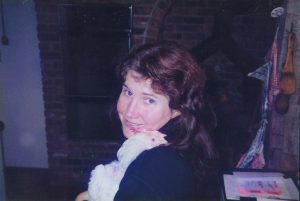 Here is a photo of me and Christmas, a chicken rescued from an egg farm in Connecticut at Christmas 1996. Christmas had been badly abused and was in terrible shape, but we nursed her back to health, and she was a beloved family member for many years. Christmas loved to fly up onto the couch and snuggle when I was watching TV. She would softly purr and often fell asleep tucked under my arm.
Here is a photo of me and Christmas, a chicken rescued from an egg farm in Connecticut at Christmas 1996. Christmas had been badly abused and was in terrible shape, but we nursed her back to health, and she was a beloved family member for many years. Christmas loved to fly up onto the couch and snuggle when I was watching TV. She would softly purr and often fell asleep tucked under my arm.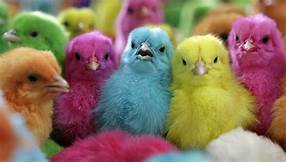 And when Easter has passed? Received as gifts, these unnaturally-colored chicks are more likely to be viewed as “toys” than living things to be cared for. Children should never be taught to view animals as playthings but instead to respect the lives and rights of all living beings. Chicks given as novelty gifts are often abandoned as their colors fade.
And when Easter has passed? Received as gifts, these unnaturally-colored chicks are more likely to be viewed as “toys” than living things to be cared for. Children should never be taught to view animals as playthings but instead to respect the lives and rights of all living beings. Chicks given as novelty gifts are often abandoned as their colors fade. 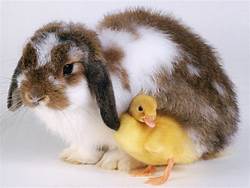 If you were thinking of buying a chick, a bunny, or any other animal to give as a present this Easter, don’t do it! Instead, give a child an actual toy—the kind that’s stuffed with cotton and does not require food, water, veterinary visits, hours of love and attention every day, and years of commitment.
If you were thinking of buying a chick, a bunny, or any other animal to give as a present this Easter, don’t do it! Instead, give a child an actual toy—the kind that’s stuffed with cotton and does not require food, water, veterinary visits, hours of love and attention every day, and years of commitment. 
